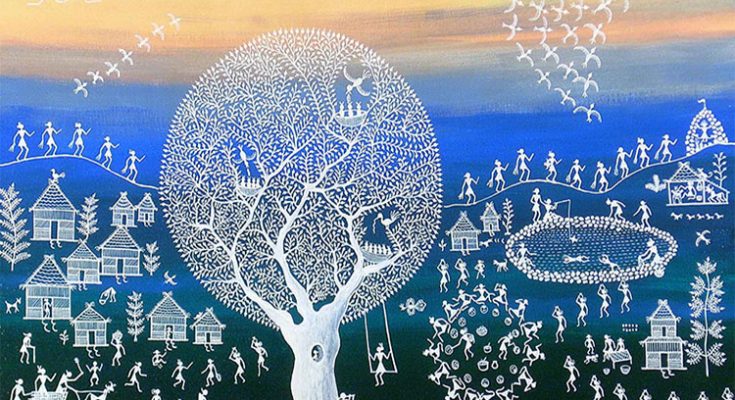All you wanted to know about Warli Painting Colours
Warli painting is an art form that has originated in tribal areas Maharashtra, primarily in Thane district. It is an indigenous art of the Warli tribe. They have historically used walls to portray various aspects of their lives.The art form has off late gained immense popularity and, in general parlance, is known as Warli Painting.
The subjects used vary but are mostly based on day-to-day activities in the life of the tribe. Warli paintings can generally be seen portraying stick figures running about, farming, rearing animals, building houses, dancing on festivals and so on.
Warli paintings usually consist of not more than two colors. The usage of material for extracting the required color (s) has evolved over time initially, mud and the cow-dung mixture was used to get a brown background. As for the white detailing, ingredients like rice paste mixed with water and gum were used. Over time, most Warli paintings have had a red background as a base which was then painted with white caricatures. This colour combination was a result of the availability, evolution, and affordability of red bricks and limestone. At times, this red background would get switched with greenish to dark brown shade. This colour was achieved with the help of cow dung. But the prime reason behind not using colours was the fact that colours had not been discovered yet.
With the discovery of paint in modern times, the painting media for Warli art has changed too. Bricks, cow dungs and limestones have been replaced with acrylic paints, water colours, crayons, colour pencils and much more. But the original aesthetic of sticking to two colours has largely remained unchanged. Maybe it is the simplicity of a dual coloured painting that makes it stand out amongst a crowd of crying colours. With the advent of these media, Warli painting has become an art form of more delicate linings and detailing, which was difficult to achieve with the minimum availability of fine resources in the earlier ages.
In today's day and age, while people don't paint their walls with Warli art any more, yet the art form has found its place in our lives! Warli paintings are used in making art pieces, DIY diary covers, home decor items, tea coasters, drapes, curtains, cushion covers and much more. This art form also acts as a great stress-buster, as it involves a lot of concentration and focus. So apart from being a release of creative energy, the art form has also evolved into a wellness tool!

